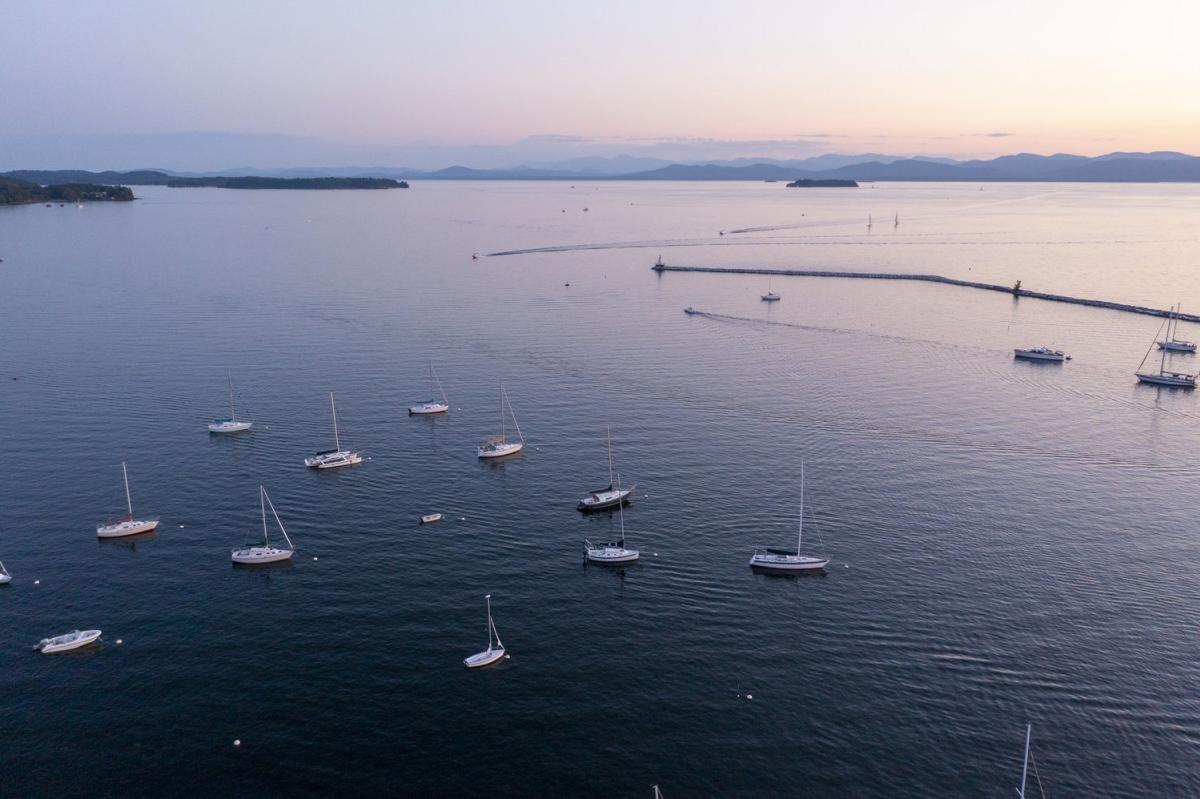- About Us |
- Contact |
- Media |
- Sitemap |
- Privacy Policy |
- Industry Events |
LAKE CHAMPLAIN
Vermont is home to the nation's “Sixth” great lake, Lake Champlain. Stretching over 120 miles long and 13-miles at its widest point, this majestic body of water is as historical as it is beautiful. Situated between the Adirondack Mountains of New York and the Green Mountains of Vermont, Lake Champlain is a prized possession for Vermonters and New Yorkers alike. Providing recreational opportunities year round, from swimming, boating, and fishing to ice skating, and a number of other winter activities.



How big is Lake Champlain?
Lake Champlain is the eighth largest naturally occurring body of fresh water in the continental United States!
It contains 587 miles of shoreline, 70-some islands, and 6.8 trillion gallons of water.
How old is Lake Champlain?
The oldest known fossil reef in the world is located in Lake Champlain. It is 450-480 million years old!
At one time, Lake Champlain was a sea that covered parts of New York, Vermont, Quebec, and Ontario. This Champlain Sea lasted from about 13,000 years ago to about 10,000 years ago.
What birds can I spot on Lake Champlain?
There are 318 species of birds in Vermont that live on, near, or depend on Lake Champlain.
Among these are the Common Goldeneye, Ring-necked duck, common and hooded Mergansers, Caspian Terns, northern pintail, Chestnut-sided Warblers, Osprey, and many more!
What kind of fish are in Lake Champlain?
Yes, Lake Champlain has about 81 species of fish. It is considered a world-class fishery for salmonid species (Lake trout and Atlantic salmon) and bass. Other species in the lake include yellow perch, white perch, brown bullhead, bluegill sunfish, and northern pike!
Explore Lake Champlain with the Community Sailing Center
- 3 minute read
All images courtesy of the Lake Champlain Sailing Center Whether you are coming to Burlington for the first time or the…
LIVING LIFE ON LAKE CHAMPLAIN
- 4 minute read
By Ralph Kucharek Truth be told, many move here for the mountains, but they end up staying for the lake. Carved between…
THE CREATION OF LAKE CHAMPLAIN
- 6 minute read
Illustration Christine Mitchell Adams As told in Abenaki and English by Jesse and Joseph Bruchac Tôni adoji Tabaldak…
WATERFRONT RESTAURANTS ON LAKE CHAMPLAIN
- 3 minute read
Experience the best of Burlington with its vibrant outdoor dining scene. From charming restaurants, delightful bakeries…
Here are some fun facts and FAQ's about Lake Champlain!
 The original Abenaki name for the lake was “Pe-ton-bowk”, which means “waters that lie between”.
The original Abenaki name for the lake was “Pe-ton-bowk”, which means “waters that lie between”. - Lake Champlain was renamed in 1609, by Samuel de Champlain.
- Burlington, Vermont is the largest city on the lake.
- For over 250 years, since 1759, a ferry has been crossing Lake Champlain at the site of the historic Ticonderoga Cable Ferry.
- As many as 300 shipwrecks have occurred during Lake Champlain’s maritime history.



